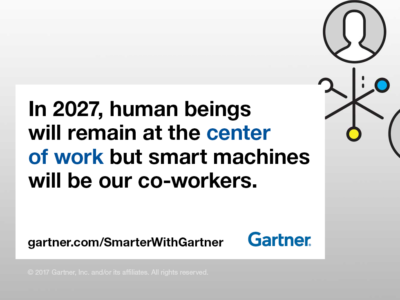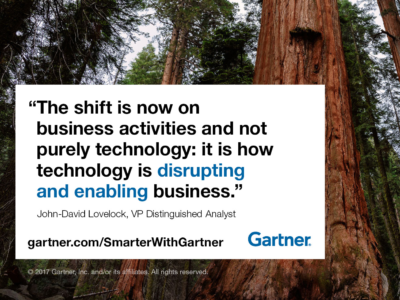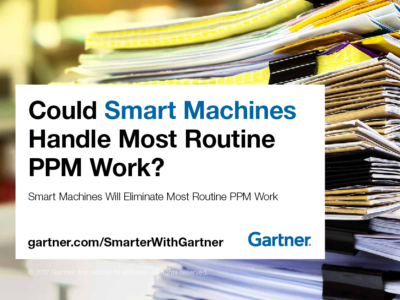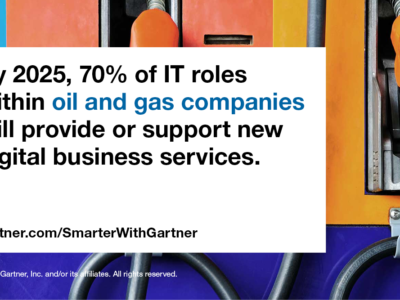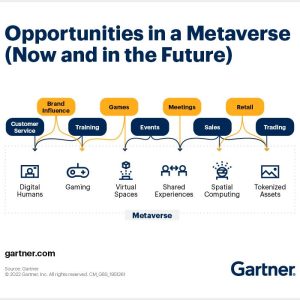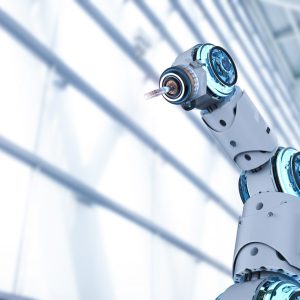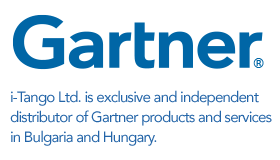Six transitions lead to a changed business landscape as connected devices, smart machines, and nearly unlimited information dominate the nature of work.
Contributor: Heather Levy
When will smart robots start cleaning our houses? Or, smart tennis racquets guide talent scouts to our doorsteps? How we’ll live with technology in 2030 will be determined by four key technology trends: Ambient Computing, Smart(er) Devices, Cybersecurity and Ethics, and Information and Analytics. In his session at Gartner Symposium/ITxpo in Barcelona, Steve Prentice, vice president and Gartner Fellow, helped the audience reimagine the business landscape of the future.
In 2030, “things” will dominate, having grown exponentially from Gartner’s estimated 26 billion connected devices by 2020. As every product, service and process becomes digitalized, the product “cloud” may become more valuable than the product itself.
Competitors will continue to challenge industry boundaries and traditional business models as Airbnb and Uber have demonstrated with hospitality and transportation markets. “Look for adjacent industries where your capabilities are complementary, and ask how digital will impact you both,” Mr. Prentice said. “Ask yourself, if Google were to enter your industry, how would they do it?”
The product “cloud” may become more valuable than the product itself.
Mr. Prentice described the following six transitions which will shape the future landscape.
#1. From Global to Personal
Digital makes the world a smaller place. We can access information about what’s happening nearly anywhere. Small companies can project a global image or customers can become manufacturers with 3D printing. Robots, which are currently used as large machinery, will downsize. While it will take time for small, personalized robots to “run around our houses,” smaller robots in peer-to-peer swarms may appear in scenarios such as farming, where they can move through crops without harming the field.
#2. From Hierarchies to Meshes
The rise of “peer-to-peer everything” means that we move from rigid relationships to fluid markets. Architecture, organization, and information flatten, giving us more choices.
#3. From Fixed Assets to Fungible (replaceable) Assets
People care less about a specific product or service (taxi or new car) because they have so many other choices (ride share). In this environment, trust and reputation can be replaced with social recommendations and standing.
#4. From Devices to Connected Humans (and things)
Today we live in a device world. “We think we care about our devices,” Mr. Prentice said. However, we will rely more on the connectivity in any form, including embedded into humans themselves. He noted that only a portion of people will want to take it this far. For the most part, we will look to personal assistants who understand us better and can provide contextually sensitive information.
While some question whether we will fully trust machines to carry out many of our tasks, Mr. Prentice noted, “You trust GPS to guide your car, even though it may take you the wrong way down a one-way street at times.”
#5. From Big Data to Algorithmic Business.
With billions of connected devices and things, the analytics of the vast amount of information becomes more important. Organizations and people will question who has access to the data and how they use it. This is especially the case as we move to sensor networks, quantified self and advanced analytics.
#6. From Resources to Smart Materials
We’ll build new materials using smart fabrics, memory materials, graphene, polymers, and nano composites. Here, material science becomes increasingly important.
Intelligent work in 2030
In the new workforce of 2030, the most successful organizations will optimize the usage of all their resources, both human and machine, for competitive advantage. “An increasing portion of your workforce will not be human,” Mr. Prentice said. However, while machines are very good for consistency, performance, predictability, efficiency, and safety; they can’t match humans’ skills in ingenuity, novelty, art, creativity, emotion, and to address variability and provide context.
An increasing portion of your workforce will not be human.
“We won’t see human-like robots for a long time,” he noted. Rather, robots will be used first in more industrialized situations.
In 2030, as we gain access to nearly unlimited information from multiple sources, digital ethics will be key to risk management. With everything connected and billions of smart machines, the opportunities to do the wrong thing – ignore privacy, favor machines, steal, etc. – will constantly be there.
“Be very careful of unintended consequences and be very careful about the digital ethics you put in place,” he said.
View the full session on Gartner Events on Demand.
For more articles visit Smarter With Gartner website.


